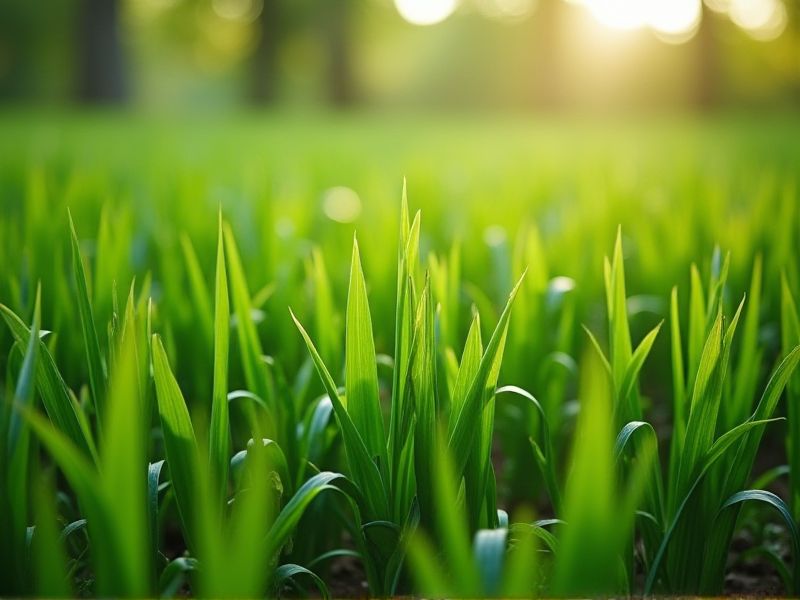
Grass-like plants that thrive in wet areas include species such as sedges, rushes, and reeds. Sedges, often found in marshes and wetlands, play a crucial role in stabilizing shorelines and providing habitat for wildlife. Rushes, characterized by their hollow stems and tufted growth, are essential for creating biodiversity in aquatic ecosystems. Reeds, dominant in many wetlands, not only serve as natural purifiers by filtering water but also support various bird species. Understanding the ecological importance of these grass-like plants can inspire conservation efforts aimed at preserving wetland habitats.
List of some Grass-like plants that grow in wet areas
- Common Rush (Juncus effusus)
- Bulrush (Schoenoplectus tabernaemontani)
- Sedge (Carex spp.)
- Water Horsetail (Equisetum fluviatile)
- Soft-stem Bulrush (Schoenoplectus validus)
- Reed Canary Grass (Phalaris arundinacea)
- Spike Rush (Eleocharis palustris)
- Cattail (Typha spp.)
- Marsh Marigold (Caltha palustris)
- Arrowhead (Sagittaria latifolia)
Important things about Grass-like plants that grow in wet areas
Habitat Preferences
Grass-like plants, such as sedges and rushes, thrive in wetland habitats characterized by saturated soils and high moisture levels. These plants are often found in areas like marshes, swamps, and along the edges of lakes and rivers, where they contribute to biodiversity and provide essential ecosystem services. Their ability to adapt to fluctuating water conditions allows them to play a crucial role in stabilizing soil and filtering pollutants. If you're exploring these habitats, you'll discover that these grass-like plants provide critical habitat for wildlife, including birds and insects, while also offering natural flood control.
Water Tolerance
Grass-like plants, such as sedges (Carex spp.) and rushes (Juncus spp.), exhibit remarkable water tolerance, thriving in wetland ecosystems. These perennial species possess adaptations like aerenchyma tissue, which enhances oxygen diffusion in waterlogged soil, allowing them to survive in saturated conditions. Their root systems play a crucial role in stabilizing soil and preventing erosion, making them vital for maintaining wetland health. If you're considering planting in your garden, incorporating these grass-like plants can contribute to biodiversity and create a resilient habitat in areas prone to flooding.
Soil Types
Grass-like plants, such as sedges and rushes, thrive in wetland ecosystems characterized by saturated soil types, including hydric soils and peat. These plants are uniquely adapted to their environments, often featuring aerenchyma tissue that allows for gas exchange in waterlogged conditions, making them critical for maintaining wetland health. You may find these grass-like species flourishing in marshes, swamps, and along the edges of lakes, where water retention and nutrient availability are optimal. Their root systems play a vital role in preventing soil erosion and providing habitat for diverse wildlife.
Growth Patterns
Grass-like plants, such as sedges and rushes, thrive in wetland ecosystems where saturated soil conditions prevail. These plants exhibit adaptations like shallow root systems that allow them to absorb water and nutrients efficiently from their environment. Their growth patterns often include clumping or tussock forms, which provide habitat for various wildlife while stabilizing the soil and preventing erosion. In your garden, incorporating these water-loving species can enhance biodiversity and improve moisture retention in similar wet areas.
Photosynthesis Adaptations
Grass-like plants, such as sedges and bulrushes, thrive in wetland ecosystems where light availability and water levels fluctuate. These plants possess adaptations, including elongated leaf blades and aerenchyma, which facilitate efficient gas exchange and buoyancy. Their root systems are often shallow yet widespread, allowing them to absorb nutrients effectively from saturated soils. In such environments, these adaptations enable grass-like plants to maximize photosynthesis, contributing significantly to wetland biodiversity and ecological balance.
Biodiversity Support
Grass-like plants, including sedges and rushes, thrive in wetland ecosystems and play a crucial role in maintaining biodiversity. These plants provide essential habitat for various wildlife species, including amphibians, birds, and invertebrates, contributing to a balanced ecosystem. Their extensive root systems help stabilize soil, reduce erosion, and filter water, which enhances the overall health of aquatic habitats. By planting and conserving grass-like plants in wet areas, you can support the intricate web of life that depends on these vital ecosystems.
Erosion Control
Grass-like plants, such as sedges and rushes, thrive in wetland ecosystems and play a crucial role in erosion control. Their dense root systems stabilize soil, preventing sediment loss and reducing runoff during heavy rainfall. These plants also improve water quality by filtering pollutants and providing habitat for wildlife, fostering a biodiverse environment. By incorporating grass-like plants into your landscape, you can enhance soil stability and promote healthy ecosystems in wet areas.
Nutrient Cycling
Grass-like plants, such as sedges and rushes, play a vital role in nutrient cycling within wetland ecosystems. These plants thrive in saturated soils and contribute to the organic matter accumulation, which enhances soil fertility and promotes microbial activity. As they grow and decompose, they release essential nutrients like nitrogen and phosphorus back into the soil, supporting a diverse array of aquatic and terrestrial life. You can observe how these plants not only stabilize the soil, preventing erosion, but also filter pollutants from water, thereby improving the overall health of wetland habitats.
Wildlife Habitat
Grass-like plants that thrive in wet areas, such as sedges and rushes, play a crucial role in maintaining biodiversity within wildlife habitats. These plants provide essential cover and nesting sites for various bird species, as well as food sources for insects and other wildlife. The intricate root systems of grass-like plants help stabilize soil and prevent erosion while also aiding in water filtration. By enhancing the overall health of wetland ecosystems, these plants support a rich tapestry of life that benefits both flora and fauna.
Human Uses
Grass-like plants, commonly found in wetlands, include sedges, rushes, and reeds, each playing a vital role in their ecosystems. Sedges, typically characterized by their triangular stems, thrive in saturated soils and provide crucial habitats for wildlife. Rushes, with their round, hollow stems, adapt well to flooding and help stabilize shorelines. Reeds, often towering over other plants, can filter water pollutants, improving overall water quality while supporting diverse aquatic life.
